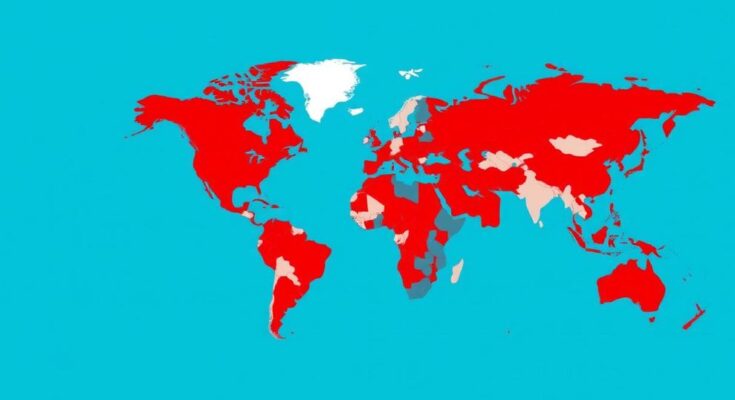The U.S. Department of State has issued Level 4 travel advisories for numerous destinations, including Russia, Jamaica, Colombia, and others, citing escalating risks from crime, political instability, and violence. These advisories reflect heightened safety concerns particularly relevant to American tourists as spring break approaches. Travelers are urged to remain informed and consider the implications for their plans, while the travel industry responds to these warnings.
In a significant update, the U.S. Department of State has raised travel advisories for numerous countries, particularly those popular among spring break travelers. Russia, Jamaica, Colombia, Belarus, Yemen, Syria, the Dominican Republic, Congo, Afghanistan, Mexico, Burundi, the Bahamas, Lebanon, Central African Republic, Iraq, Ukraine, Venezuela, Haiti, Iran, Myanmar, South Sudan, Mali, Burkina Faso, and North Korea now have advisories ranging from Level 3 (Reconsider Travel) to Level 4 (Do Not Travel). This change reflects increasing concerns about crime, political instability, and gang violence, affecting tourist perceptions and travel plans.
These regions, traditionally known for their cultural vibrancy and beautiful landscapes, face escalating security issues, including violent crimes such as armed robberies, kidnappings, and civil unrest. Such developments have compelled U.S. authorities to issue urgent travel warnings, emphasizing the need for potential travelers to remain vigilant and informed regarding their safety.
The U.S. travel advisory system categorizes destinations into four levels based on safety assessments. Level 4 advisories signal serious safety risks, warranted by political unrest or ongoing conflicts. Such advisories are increasingly common in various global regions, indicating that American tourists should reconsider their travel arrangements to countries grappling with some of the harshest security challenges.
As of February 2025, specific countries under Level 4 advisories, such as Afghanistan, the Democratic Republic of the Congo, Lebanon, the Central African Republic, Belarus, Iraq, Ukraine, Venezuela, and Haiti, are highlighted due to extensive civil violence, poor governance, and substantial security threats to travelers. Each of these nations presents unique risks, including armed conflicts, kidnappings, economic crises, and more, which may jeopardize the safety of visitors.
Travel to Afghanistan is particularly perilous, given the Taliban’s resurgence and ongoing violence. The Democratic Republic of the Congo’s conflict and disease outbreaks also pose significant hazards. Lebanon’s political unrest and economic instability further add to the dangers, while the Central African Republic’s armed conflict puts travelers at risk of abduction. Similarly, Belarus experiences political repression, and Iraq remains volatile due to ongoing threats from extremist groups.
The situation in Ukraine remains critical due to the conflict with Russia, while Venezuela faces a humanitarian crisis coupled with political violence. Haiti’s rampant gang activity and Iran’s political unrest compound the risks travelers face in these regions. Travelers must adhere to the warnings set forth by the U.S. government as they consider their travel plans.
Despite such dire warnings, some travelers still consider visiting these high-risk areas. It is essential that they take precautionary measures, which may involve consulting the U.S. State Department’s travel advisory website, enrolling in the Smart Traveler Enrollment Program (STEP), obtaining adequate travel insurance, and maintaining contact with local embassies.
The implications of increased Level 4 advisories are significant for the travel industry. Major players, including airlines and tour operators, may need to adapt their offerings and provide up-to-date safety information to customers. Furthermore, demand for comprehensive travel insurance, particularly for emergency situations, is likely to rise.
The U.S. travel advisory system evaluates factors such as crime rates, political situations, and emergency services availability to determine safety levels. Nonetheless, many spring break tourists may remain unaware of these advisories or consciously choose to ignore them. It is critical that travelers remain informed and make judicious decisions when choosing their destinations as the spring break season approaches, emphasizing the importance of safety and responsible travel planning.
American travelers must heed the warnings associated with Level 4 travel advisories as the spring break season approaches. This highlights the necessity for informed decision-making and underscores the growing security risks in numerous international destinations. The travel industry will likely adjust to these advisories, and accordingly, tourists are urged to maintain vigilance and carefully plan their journeys to ensure a safe and enjoyable experience.
Original Source: www.travelandtourworld.com




